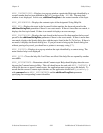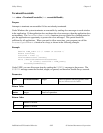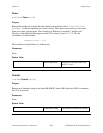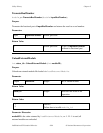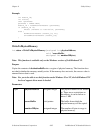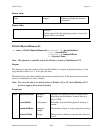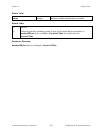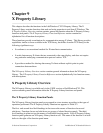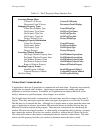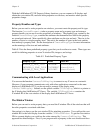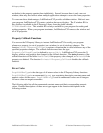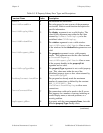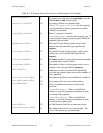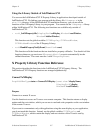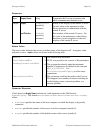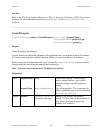
X Property Library Chapter 9
LabWindows/CVI Standard Libraries 9-2 © National Instruments Corporation
Table 9-1. The X Property Library Function Tree
Accessing Remote Hosts
Connect To X Server ConnectToXDisplay
Disconnect From X Server DisconnectFromXDisplay
Managing Property Types
Create New Property Type CreateXPropType
Get Property Type Name GetXPropTypeName
Get Property Type Size GetXPropTypeSize
Get Property Type Unit GetXPropTypeUnit
Destroy Property Type DestroyXPropType
Managing Property Information
Create New Property CreateXProperty
Get Property Name GetXPropertyName
Get Property Type GetXPropertyType
Destroy Property DestroyXProperty
Accessing Window Properties
Get Single Window Property Item GetXWindowPropertyItem
Put Single Window Property Item PutXWindowPropertyItem
Get Window Property Value GetXWindowPropertyValue
Put Window Property Value PutXWindowPropertyValue
Remove Window Property RemoveXWindowProperty
Handling Property Events
Install Property Callback InstallXPropertyCallback
Uninstall Property Callback UninstallXPropertyCallback
Get Error String GetXPropErrorString
X Interclient Communication
X applications often use X properties to communicate with each other. Properties are essentially
tagged data associated with a window. Applications communicate by reading and writing
properties to and from windows. In addition, an X application can request that the X server
notify it whenever a specific property value changes on a window.
The X applications that need to communicate with each other must first connect to the same X
display. Then they must agree upon the names and types of properties as well as the X window
IDs that they use to transfer the data. Although it is a simple matter to agree upon the names and
types of properties in advance, the window IDs cannot be known in advance because they are
different for each invocation of the program. There must be a mechanism for transferring the
window IDs from one client to another. A client usually accomplishes this by placing a property
that contains the window ID on the root window, which is a window that all clients can access.
The window ID refers to the window containing the data for transfer to other clients. The other
clients read this property from the root window to determine where the data is stored.



